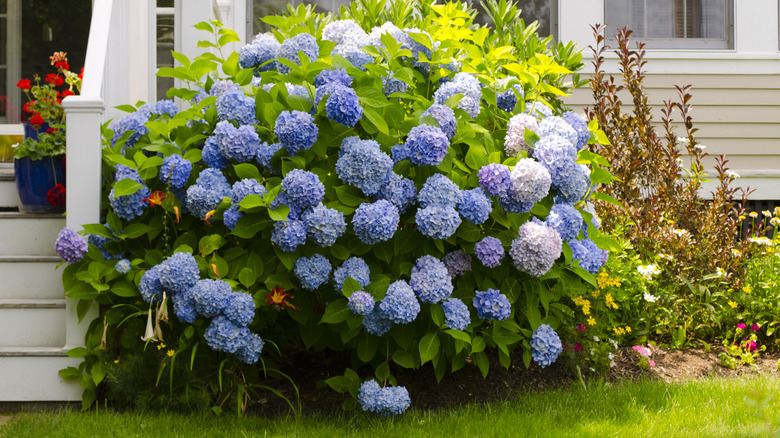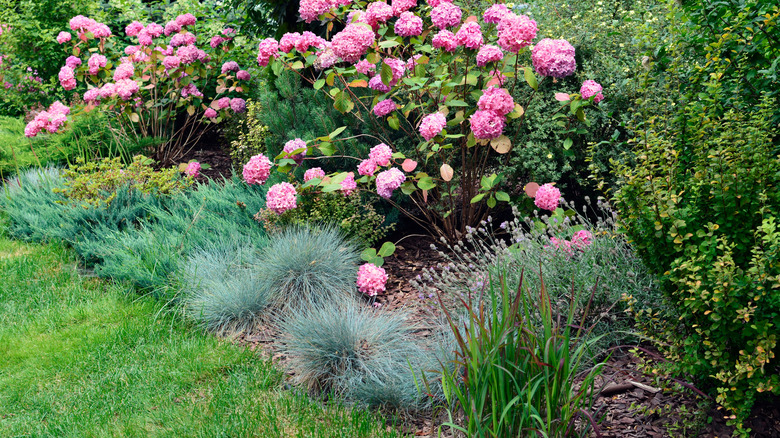The Classic Ground Cover Companion To Plant With Hydrangeas In The Garden
Hydrangeas are garden standbys for good reason. Not only are their fresh flowers beautiful, but because the flowers dry so well on the plants, hydrangeas can often provide interest through the winter as well. Pairing them with blue fescue grass (Festuca glauca), another beautiful plant with year round interest, is the key to a vibrant and elegant garden, no matter the season.
Hydrangeas come in a variety of sizes, from panicle varieties that can reach up to 25 feet tall to cultivars like the 'Tiny Tuff Stuff' mountain hydrangea which only grows to two feet. Blue fescue, on the other hand, rarely grows taller than about a foot. Combining hydrangeas and blue fescue in the garden is a great way to create interest with different plant heights. Additionally, the elegant, wispy clumps of blue fescue provide a distinctive contrast against the broad leaves and massive lacy flowers of hydrangeas. Whether you opt for hydrangeas with blue flowers to pair with your blue-tinged grass or creamy white or pink flowers to create contrast, hydrangeas and blue fescue are sure to make a big statement together in your garden.
Caring for hydrangeas and blue fescue in the garden
While hydrangeas have a reputation as flowering shrubs that thrive in the shade, many species also do well in part to full sun. Panicle hydrangeas in particular are good options for areas with more sun. Blue fescue requires full sun to fully develop its distinctive blue color, but it can also grow well in part shade. It shouldn't be too challenging to find a location that suits both your hydrangeas and your blue fescue. With blue fescue hardy in zones 4 through 8 and hydrangeas hardy in zones 3 through 9 depending on the variety, the plants also have a lot of overlap in USDA growing zones.
Hydrangeas and blue fescue both grow best when they are planted in well-draining soil that is kept moist. While the ornamental grass is relatively drought tolerant and is not too picky about watering, the same cannot be said for hydrangeas, which tend to struggle in drought conditions. Mulching around these plants will not only make your garden look neater, but will also help to keep the soil moist and cool.

